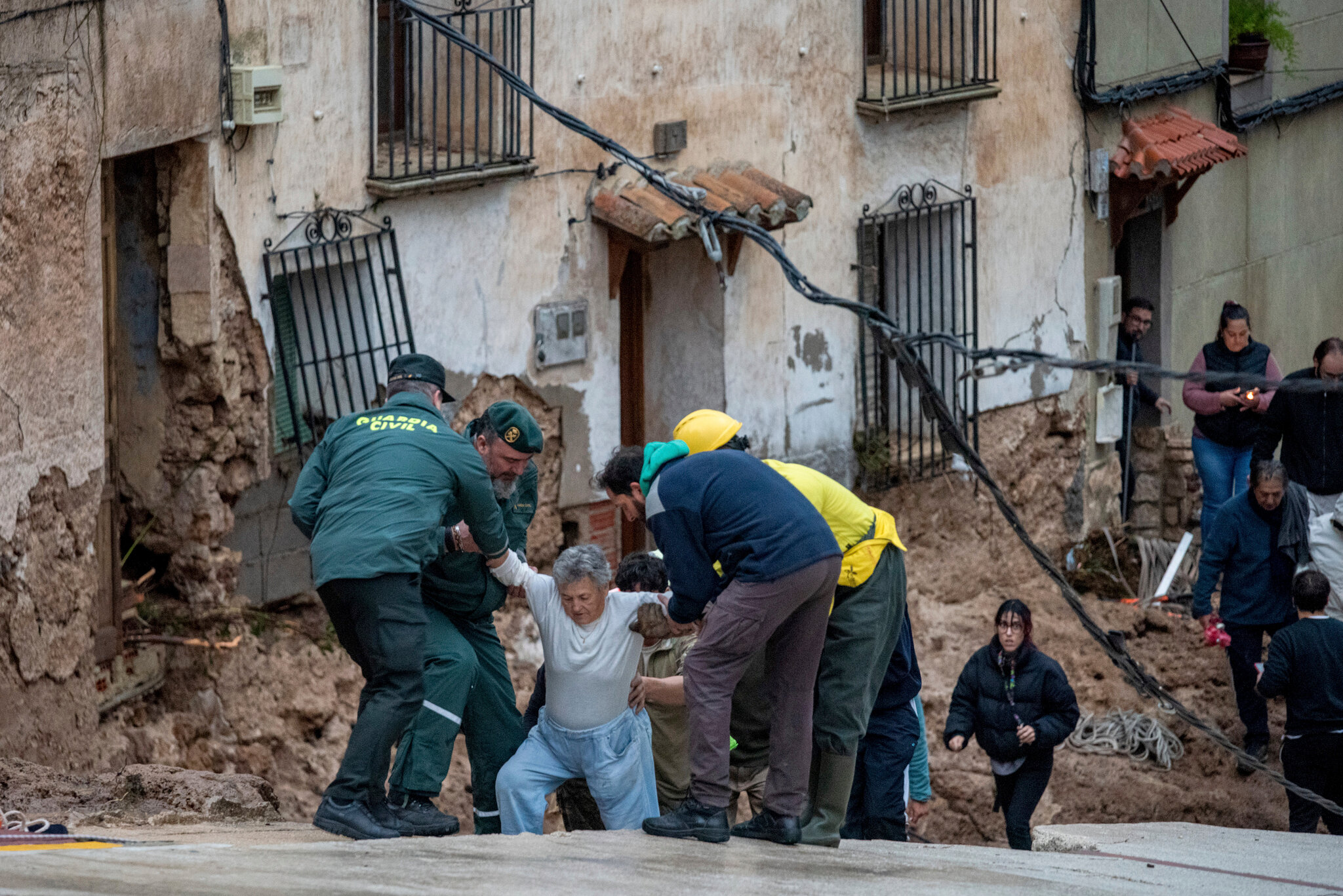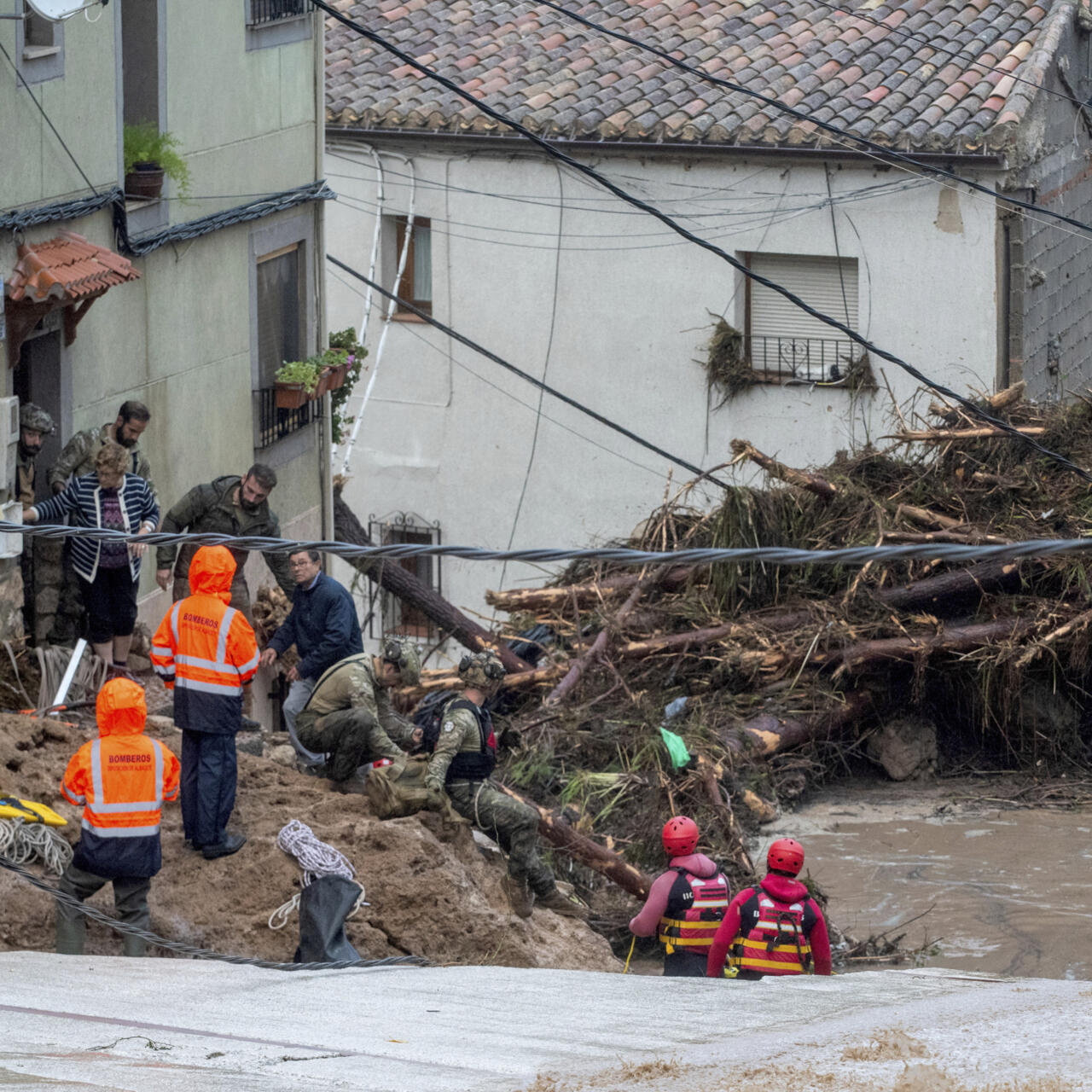In the early hours of an unyielding storm, south-eastern Spain was caught in nature’s unrestrained fury. A torrent delivered a year’s worth of rain in just eight hours to Chiva, near Valencia, triggering flash floods that transformed tranquil streets into deadly rivers.
The scale of destruction was unprecedented, with at least 62 fatalities reported, countless others unaccounted for, and widespread chaos as infrastructure crumbled under the force of surging waters. Spain’s Mediterranean coast, typically resilient to autumn rains, was overwhelmed, and a lingering question echoes across the region: Why weren’t warnings issued sooner, and what role does an increasingly volatile climate play in intensifying such disasters?
The aftermath of these devastating rains sheds a harsh light on Spain’s crisis preparedness, infrastructural vulnerabilities, and the rapidly mounting risks of climate change. As officials race against time to rescue those trapped and account for the missing, the public demands answers and climate experts warn that this disaster may be a sign of more frequent and intense extreme weather events.
The Scale of the Floods
On an otherwise typical autumn day, storm clouds loomed over Chiva and its surrounding areas. By nightfall, a massive downpour delivered 491mm of rain in just eight hours. Roads turned to rivers, and vehicles were no match for the force of the floods. Bridges collapsed, and footage showed buildings submerged and cars tumbling through streets as if caught in rapids. Resident accounts paint a chilling scene of helplessness, as walls of water cascaded through familiar neighborhoods, rendering them unrecognizable. This region had seen storms before, but nothing on this scale. The downpour created localized tsunami-like waves that spread devastation with lethal speed and intensity.
The torrents quickly rendered main roads impassable, stranding hundreds of highway drivers and leaving others to navigate impromptu rivers on foot. In one dramatic scene, motorists formed a human chain to escape a water-filled highway, capturing the desperation and precariousness of their predicament.
As questions about Spain’s emergency response arise, it’s worth examining the timing of the official warnings issued by the civil protection authority. Reports suggest that the first warnings were dispatched over two hours after the flooding had already transformed Chiva’s streets into torrents. While Spain’s emergency services were quick to arrive on the scene, the delayed warning is now a focal point of public outrage. Could a timelier alert have saved lives, allowing residents to avoid roads or seek refuge on higher floors?
Regional officials like Pilar Bernabé, the government representative for Valencia, defended the response as the best possible given the circumstances, citing access issues that stymied rescue efforts. But the refrain from locals is clear: “Too little, too late.” The communication gap underscores a critical shortfall in Spain’s crisis management, a deficiency that looms larger as extreme weather events become more frequent and severe.
Extreme Weather in the Mediterranean
Climate experts have pointed to an unsettling trend: severe weather patterns have become more pronounced and frequent across the Mediterranean, a traditionally mild climate known for occasional heavy rains but rarely flash floods of this magnitude. Spain’s national meteorological agency, AEMET, has confirmed that the Valencia region, like much of southern Europe, is increasingly vulnerable to heavy rainfall and rapid flooding due to climate change.
As the world warms—already over 1.1°C since the Industrial Revolution—scientists warn that storms in warmer climates are fueled by higher levels of atmospheric moisture, leading to more intense rainfall over shorter periods. The Mediterranean, with its warm and often humid environment, is particularly susceptible to “flash” storms, which are likely to increase in both frequency and intensity, posing an ongoing threat to regions like Valencia, Murcia, and Andalusia.

Climate experts point to warming sea temperatures as a significant factor contributing to erratic storm patterns. Warmer seas not only provide more fuel for storms but also exacerbate temperature differences between land and ocean, creating turbulent weather systems that are difficult to predict and contain. In turn, this turbulence creates conditions conducive to localized but intense storms, with high rain yields over relatively small areas.
The flood in Valencia is an alarming illustration of this trend. While many factors contribute to such extreme weather, climate scientists are clear that climate change has made events like this more likely. This, in turn, demands immediate adaptation from governments to protect communities from future disasters.
A Modern Infrastructure Unprepared for the New Climate Reality
Valencia and other affected regions have invested heavily in infrastructure to manage rainwater, yet much of the system was overwhelmed within hours. Roads, bridges, and drainage systems proved inadequate in the face of such an intense downpour. In some towns, floodwaters swept away street lamps, benches, and even sections of reinforced concrete, underscoring the force of the deluge.
Spain’s investment in drainage and emergency systems, while substantial, may not be calibrated for a climate that is evolving rapidly. Adaptations like expanded drainage networks, robust flood barriers, and resilient public transport infrastructures are essential for future-proofing cities like Valencia. Without decisive changes, Spain’s infrastructure may be ill-prepared for the storms of tomorrow.
The flood has also disrupted local economies across the region. Airports closed, diverting flights from Valencia to other cities; rail services ceased entirely, leaving tourists and commuters stranded. Many businesses and schools were forced to close as the floodwaters rose, an interruption that will have both immediate and long-term repercussions for local economies.
Moreover, as these natural disasters increase in frequency, insurance companies are sounding alarms about the rising costs associated with climate-induced damage. In a country already grappling with economic challenges, the financial burden of rebuilding after extreme weather events adds strain to public coffers, necessitating substantial investment in adaptation and mitigation.
Strengthening Spain’s Crisis Response System
The delayed warnings that preceded this catastrophe are emblematic of broader challenges within Spain’s crisis response framework. Swift communication is essential to mitigating the impact of natural disasters, and Spain must invest in early warning systems that can alert communities before disaster strikes. Improving response times, ensuring seamless communication between regional and national authorities, and offering communities transparent, accessible information will be crucial to prevent future tragedies.
Additionally, public information campaigns aimed at educating residents on emergency procedures in the face of flash floods could bolster resilience. Communities in flood-prone areas need to understand the risks and receive clear guidance on how to protect themselves in the event of future disasters.

The structural devastation wrought by these floods highlights an urgent need to prioritize resilient infrastructure development. Government initiatives should focus on robust stormwater management systems, resilient transportation infrastructure, and green spaces designed to absorb excess rainwater. Moreover, Spain can look to international examples in flood management, such as the Netherlands, where flood-prone cities have invested in sophisticated drainage and adaptive urban planning to mitigate similar risks.
This crisis should also prompt policy discussions on how to address climate change locally. Spain’s government has committed to reducing emissions and increasing renewable energy capacity, yet climate resilience at the community level remains under-addressed. Funding for climate adaptation, from sustainable water management systems to coastal barriers, could prove vital as communities in Spain face an increasingly unpredictable climate.
A Lesson and a Warning
The deluge that devastated Valencia and its surrounding areas has laid bare the vulnerabilities of a region unprepared for the extremes of a changing climate. As families mourn the loss of loved ones and communities begin the arduous task of rebuilding, Spain must confront the reality that these events are no longer exceptional but are becoming a part of life. Future resilience depends on swift, informed action—both to reduce greenhouse gas emissions and to adapt to the new realities of a warming world.
As south-eastern Spain clears the wreckage, this tragedy serves as a somber reminder that we are only as resilient as our infrastructure and preparedness allow. Moving forward, regional and national authorities must take proactive steps to safeguard communities, strengthen response mechanisms, and build infrastructure that can withstand the storms ahead. Only through coordinated, comprehensive action can Spain hope to protect its citizens from future tragedies in an era of climate uncertainty.
The events in Valencia offer an indelible lesson on the urgency of preparedness in the face of an unpredictable climate. The world is watching, and Spain has the opportunity to set a precedent for resilience in an era when nature, fueled by climate change, may continue to deliver the unexpected.



